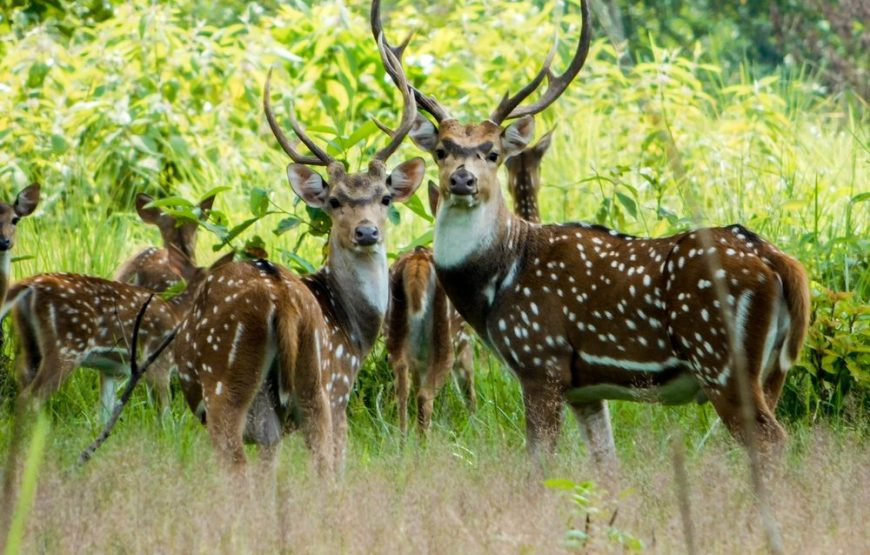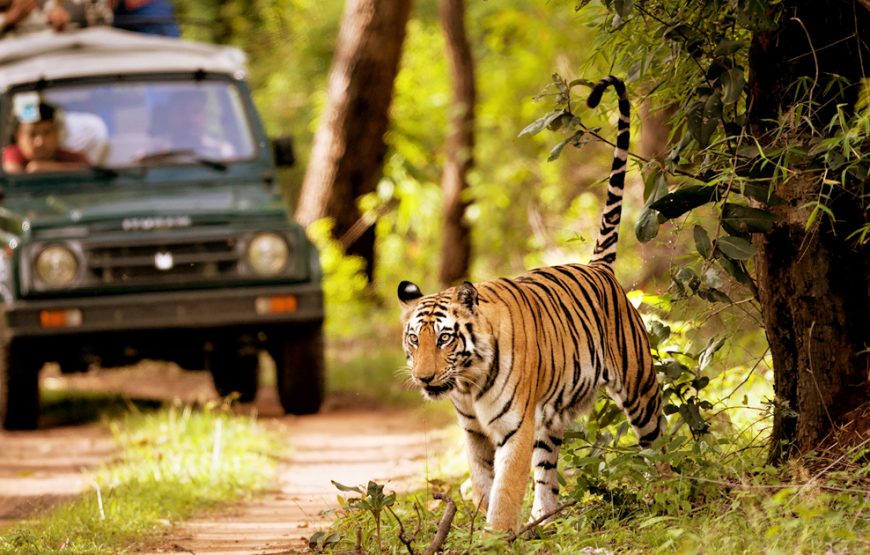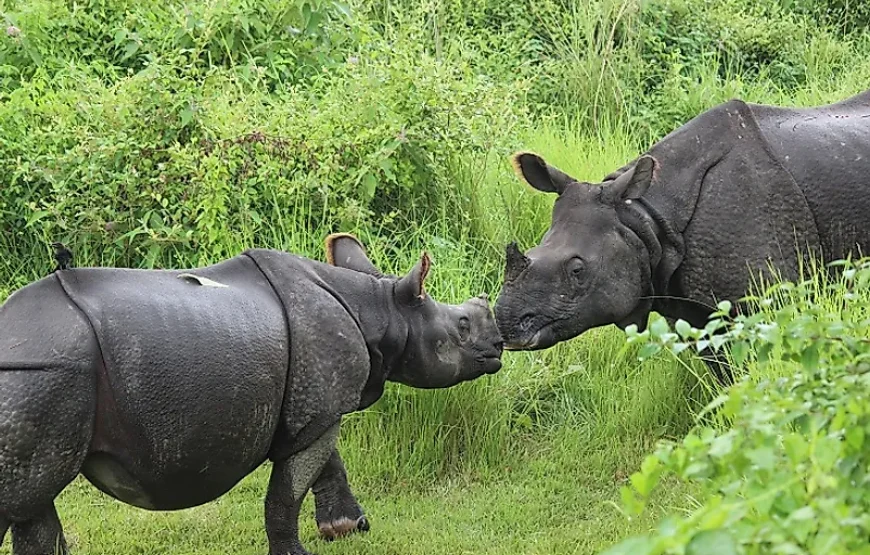from 0 review
Daily Tour
10 people
___



Chitwan Jungle Safari Tour offers you a visit to the Chitwan National Park, a UNESCO World Heritage site. This was established in 1973 AD covering an area of 932 sq. km of subtropical valleys and dense forest.
Sal forests cover 70 percent of the park. Sal leaves are used locally for plates in festivals and religious offerings. Grasslands cover 20 percent of the park. There are more than 50 different types of grasses, including the elephant grass (Saccharum spp ), renowned for its immense height.
The Chitwan National Park is home to at least 43 species of mammals. The “King of the Jungle” is the Bengal Tiger. Apart from these top predators leopards, fishing cats, jungle cats, clouded leopards, leopard cats, marbled cats, golden jackals, Indian wild dogs, sloth bears, Bengal foxes, Spotted linsangs, palm civets, Large and Small Indian civets, several species of mongoose, binturongs, honey badgers and yellow-throated martens roam the jungle for prey. Striped hyenas are rare and prevail on the southern slopes of the Churia Hills. Apart from numerous wild boars also sambar deer, Indian muntjac, hog deer and herds of chital inhabit the park. Four-horned antelopes reside predominantly in the hills. Furthermore rhesus monkeys, hanuman langurs, Indian pangolins, Indian porcupines, several species of flying squirrels, black-naped hares and endangered hispid hares are present.
The park is one of the few known breeding sites of the globally threatened Indian spotted eagle. Peafowl and jungle fowl scratch their living on the forest floor. Apart from the resident birds about 160 migrating and vagrant species arrive in Chitwan in autumn from northern latitudes to spend the winter here, among them the Greater Spotted Eagle, Eastern Imperial Eagle and Pallas’s Fish-eagle.
CNP experiences a tropical monsoon climate throughout the year with high humidity. The temperatures heat up to 43°C during March and June. The monsoon brought by mid-June is swept away by late September during which most of the annual rainfall of 2,500 mm falls making the rivers flooded and roads impossible. The monsoon clouds withdraw, dropping the humidity after mid-October. Until late December, day temperatures range from 36 °C (97 °F) to 18 °C (64 °F) while the temperature during nights cools down to 5 °C (41 °F). local villagers are permitted to cut thatch grasses during the period of late January to fulfil the need of villagers to promote a better view of wildlife to visitors.
1. Tharu Culture
2. Chitwan Jungle Safari
3. Canoe Rides
4. Cycling through village
5. Bishazari taal
6. Elephant Rides
Leave a reply